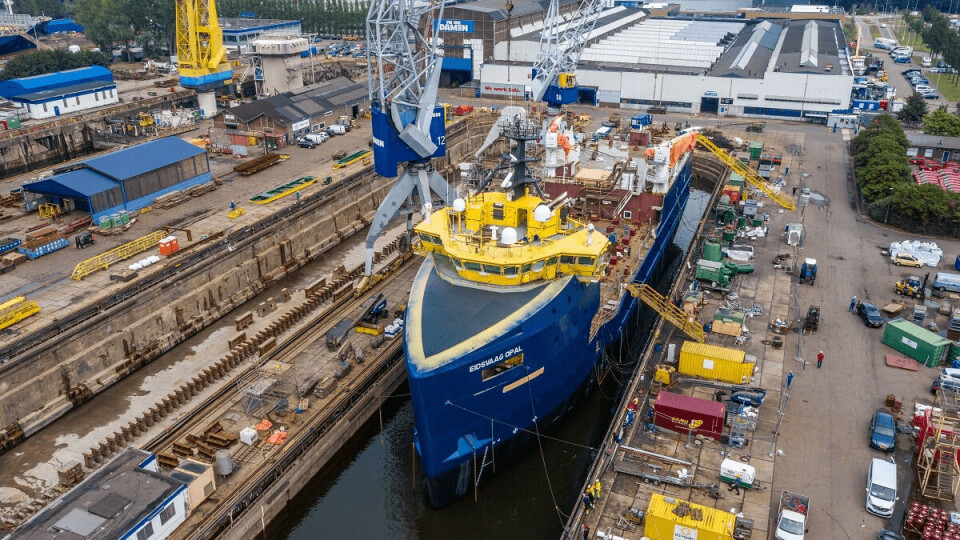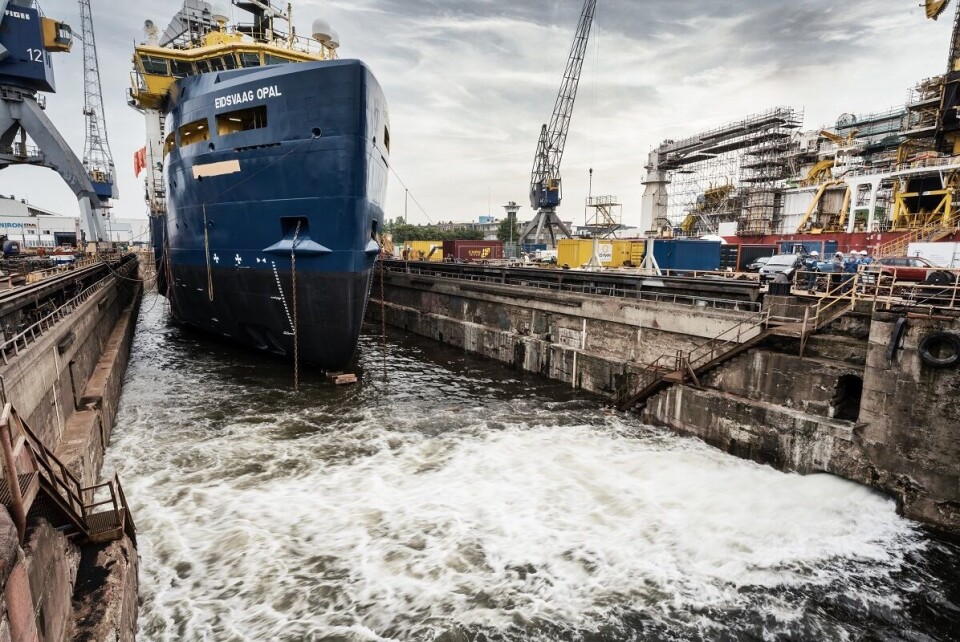
New career in fish farming for offshore support vessel
Dutch boatbuilder Damen Shipyards Group has completed the conversion of a former platform supply carrier (PSV) into a fish feed carrier for Norwegian company Eidsvaag, which provides sea transport for salmonid feed manufacturers Skretting and EWOS Cargill.
A series of major works on the vessel, which has been named the Eidsvaag Opal, included extending its length by five metres. This involved Damen Shiprepair Amsterdam (DSAm) cutting the hull in two and inserting in new steel sections. Damen was also required to widen the beam of the vessel – using a series of side boxes – to give additional stability and cargo capacity.
Additionally, the yard integrated 35 new silos and a big bag hold, enabling Eidsvaag Opal to transport up to 2,800 tonnes of fish feed. Damen also outfitted the vessel with five new cranes and a discharge system of conveyors, buckets, elevators and a discharge arm.

51km of cable removed
The project also required removal of 51 kilometres of cable, including 15 kilometres from the old cargo systems alone.
Damen said DSAm secured the tender to carry out the conversion of Eidsvaag Opal due, amongst other things to its close proximity to Niron Staal – Damen’s specialist steel fabricator. Another factor was Damen’s previous conversion experience for the aquaculture sector and the fact that the company knew the vessel, having built the PSV back in 2013.
The vessel will be used in the Fjordfrende collaboration, operated by Eidsvaag for Skretting and Cargill. Although they are competitors Skretting and Cargill are collaborating in outbound logistics. The partnership is based on a number of horizontal logistics projects receiving funding from the EU Commission, aiming at increasing sustainability and efficiency in the aquaculture industry.
As a result of Fjordfrende, the CO₂ emissions of both companies will be reduced by one fifth, some 10-20 million kg CO₂ per year.























































